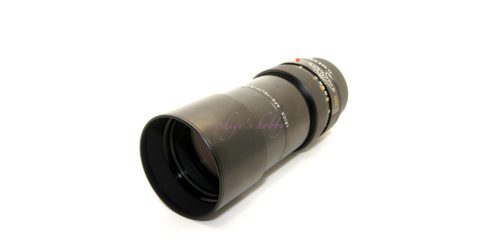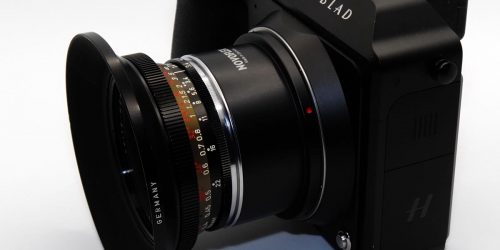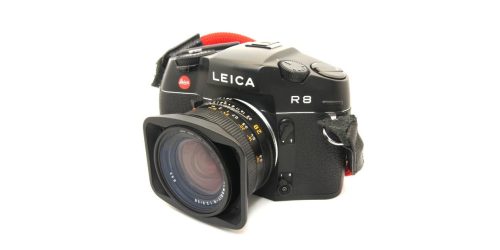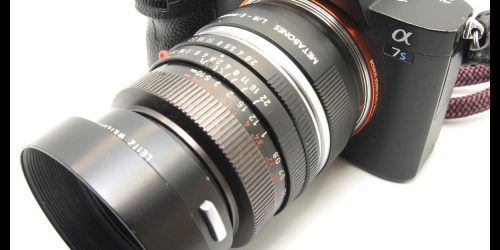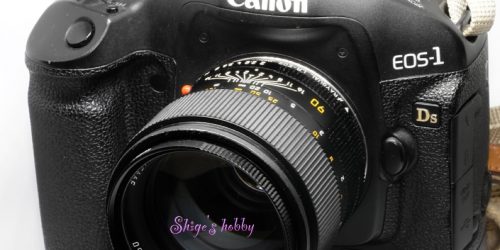LEICA R8
Review and photo examples of the LEICA R8 SLR film camera by Leica
Gallery
Photographic examples were taken with FUJIFILM COLOR100 film, KODAK Pro Image100 KODAK COLORMAX 200.
Lenses used were SUMMILUX-R 35mm, SUMMICRON-R 35mmm, SUPER ELMAR-R 15mm, and SUPER ELMARIT-R 15mm. More details in the gallery captions.
Review
I used it as a film camera for the first time in about 10 years since my DMR broke and became a paperweight and I got an ELMARIT-R 15mm in 2023.The LEICA R8 was purchased for the DMR, so 2023 is the first time I have used it on film. The 2.47 million units used were black.
Later, I acquired a 2.75 million R8 Silver (4th generation) along with a motorwinder.
I was interested in the motor winder, which costs about 20,000 yen by itself, but I bought it because it was 57,000 yen including the silver body. I found out that the drawback of the motor winder is that it automatically winds up the first three frames, so you get one or two frames of black film, and it finishes charging the moment you press it, so if you press the shutter release button too much, you can take two frames in a row. You never know until you try everything.
I think the shutter sound is the same as when I was using the DMR, but the 4th generation may be a little quieter.
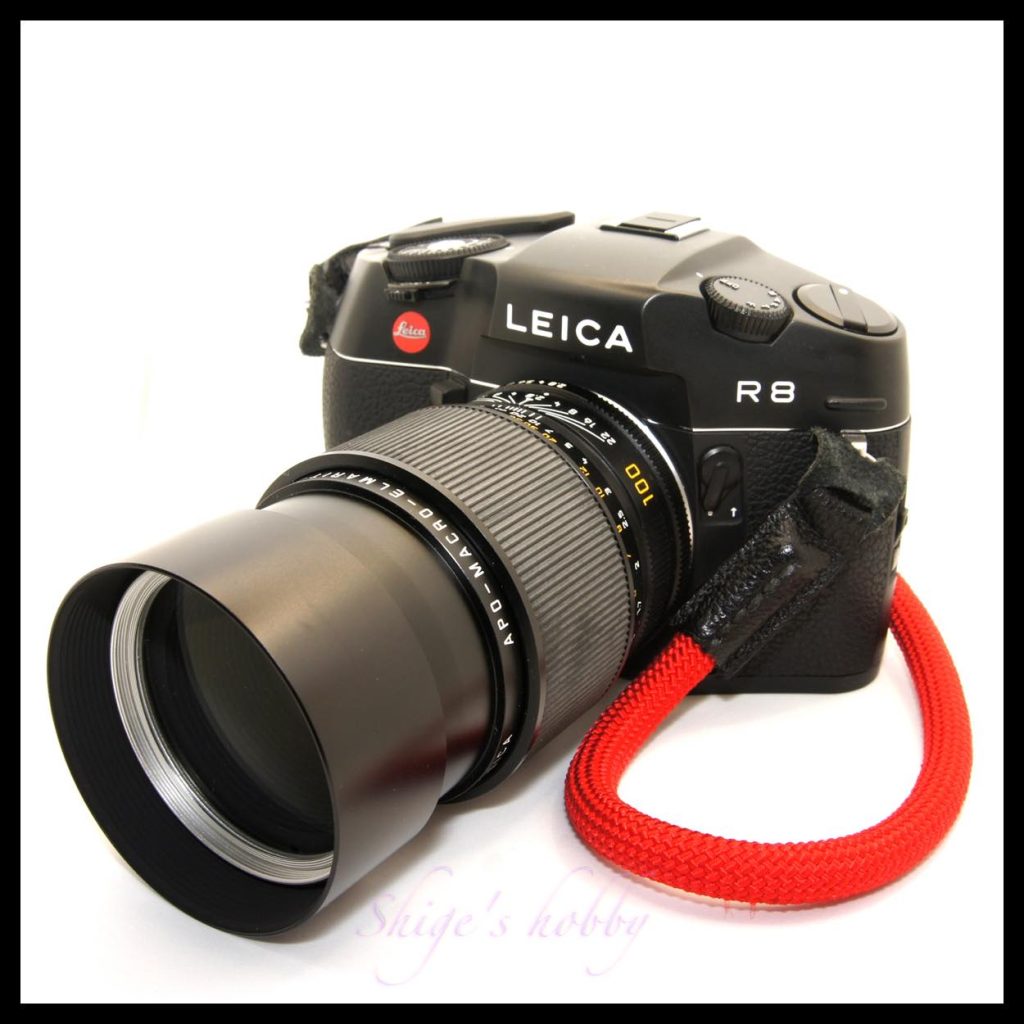
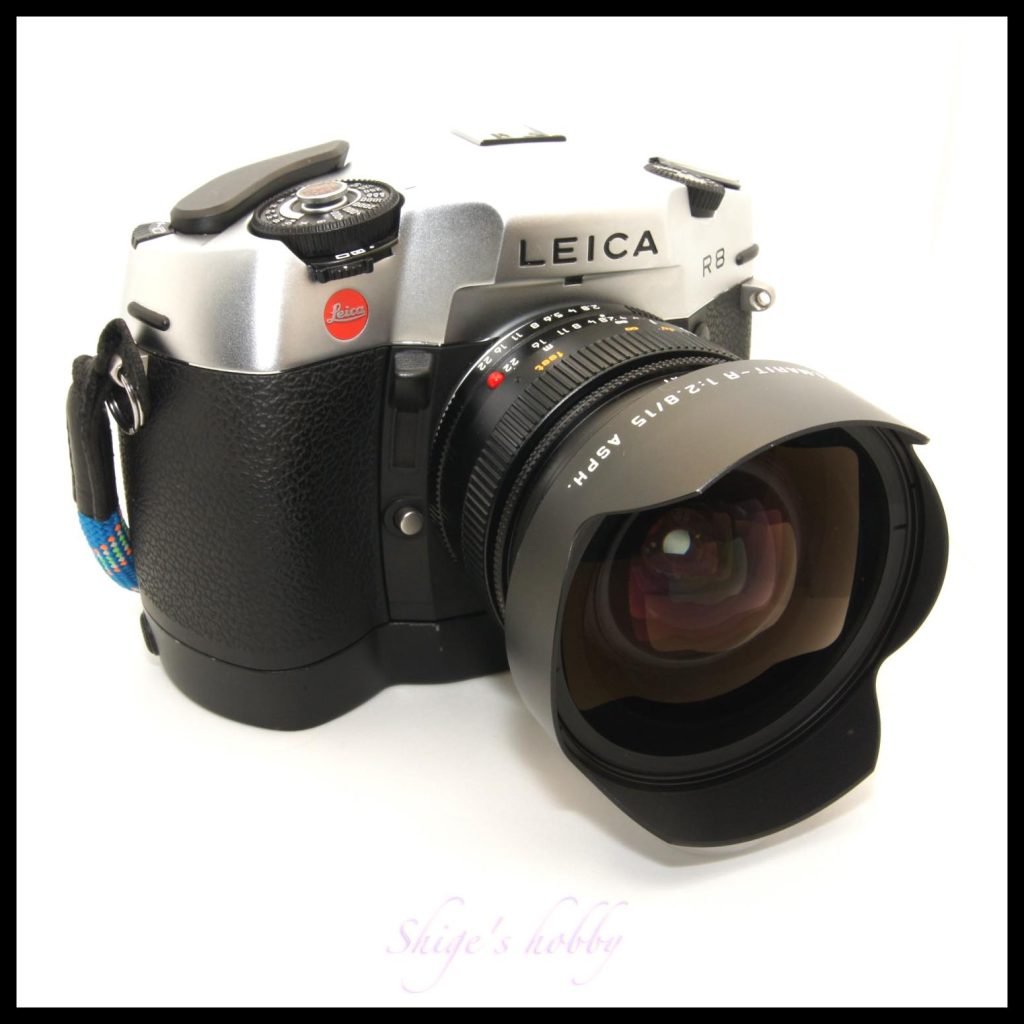
Specification
The LEICA R8 was manufactured from 1996 to 2002, with about 40,000 units produced, and is quite common on the used market. Its successor, the LEICA R9, was produced only 8,050 units, coinciding with the end of film cameras.
The R8 was slightly improved over four generations, with the first generation produced early on being the most widely distributed.
The generations are identified by serial numbers: first generation from 2.28 million to 2.422 million (13,500 units) in 1996-1997, second generation from 2.427 million to 2.4358 million (6,000 units) in 1997-1998, third generation from 2.464 million to 2.477 million (4,000 units) in 1998, and fourth generation from 2.464 million to 2.477 million (4,000 units) in 1999. The third generation was from 2.55 million to 2.85 million (8,050 units) in 1998-2002, and the fourth generation was from 2.55 million to 2.85 million (8,050 units) in 1998-2002.
Since the R8 was almost complete as an electronic camera without AF, the improvements over the four generations were minor improvements such as durability, etc. The differences in parts, which are introduced here, are slight and difficult to distinguish other than the serial number. Even with older serial numbers, parts from the period when they were repaired were used for repairs, so it should not be said that the durability is generally inferior to that of older models.
If the camera is not equipped with a motor winder, it is necessary to wind up and return the film manually.
Like Japanese cameras, the R8/R9 has a function to read the DX of the film, so the ISO setting can be done automatically.
There are two options to wind the R8/R9 automatically: motor winder (2 frames/second) and motor drive (4.5 frames/second), but according to the owner of Matsumoto Camera in Osaka, it is better not to use the motor drive because it will damage the camera. It is believed that the camera parts cannot withstand the driving force exerted by the motor drive’s high-speed continuous shooting (4.5 frames/second, or 8 seconds for a 36-frame camera).
The bare R8 requires two CR2 lithium batteries for use.
When using the motor winder, two CR123A batteries are required.
When using the motor drive, a special Ni-MH (nickel-metal hydride) battery is required, which differs from the DMR’s lithium-ion battery in battery type and shape.
The viewfinder screen is exclusive for R8/R9, probably because the viewfinder magnification is different from that of R7 or earlier. Currently, used ones are not so common. The following is a list of viewfinder screens.
| Screen number | Screen name | Note |
| 14343/14392(DMR) | Universal Split Wedge Micro Prism | Center Split + Microprism |
| 14344/14393(DMR) | Plain Matte | |
| 14345/14394(DMR) | Microprism | Center microprism |
| 14346 | Matte with Grid & TV Mark | |
| 14347 | Clear with Crosshairs | |
| 14387/14395(DMR) | Ground-Glass Screen with Grid |
In addition, the electronic R series, such as the R8/R9, are not repairable as of 2023, so they are only to be used to the point where they can be used.
| Model name | R7 | R8 | R9 |
| Film size | 35mm | ← | ← |
| Finder | x 0.8 | x 0.75 | ← |
| Max shutter speed | 1/2000 | 1/8000 | ← |
| Film counter | Upper right side of the body | In the finder | Upper right side of the body In the finder |
| Battery | SR44*2 | CR2*2 | ← |
| Screen | 5 type | 6 type | ← |
| CAM | 3/R/ROM | ← | ← |
| Release date | 1992 | 1996 | 2002 |
| Size (H x W x D) | 94.8 x 138.5 x 62.2 | 101 x 158 x 62 | ← |
| Weight (Body only) | 670 | 890 | 790 |
| Product number | 29,629 | 38,551 | 8,050 |
| Color | Black | Black/Silver | Black/Gray |
Options
- 14209 [Motor Winder R8/R9] ¥76,500 (excl. tax in Japanese Yen)
- 14313 [Motor Drive R8/R9] ¥125,000 (excl. tax in Japanese Yen)
- 14250 Leica Power-Pack MW-R8 (NiCad (nickel cadmium) battery for motor winder)
Reference links
- RLFC’s R8 introduction page (Japanese)
- RLFC R8 Minor Changes (Japanese)
- Accessories for LEICA R8/R9 (French)

